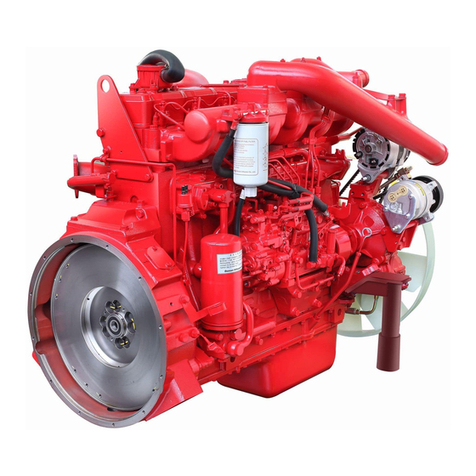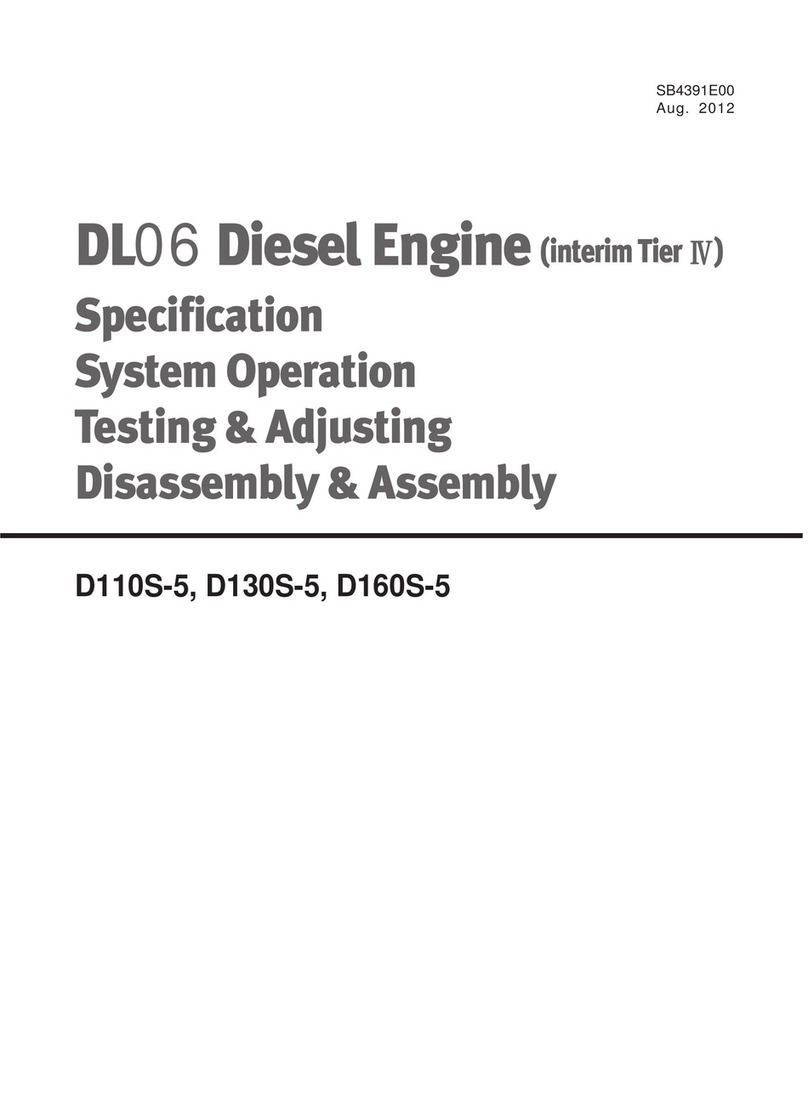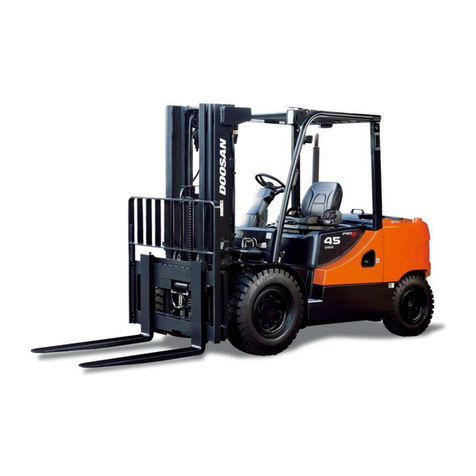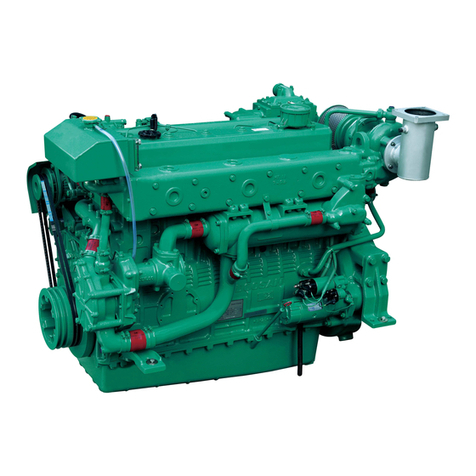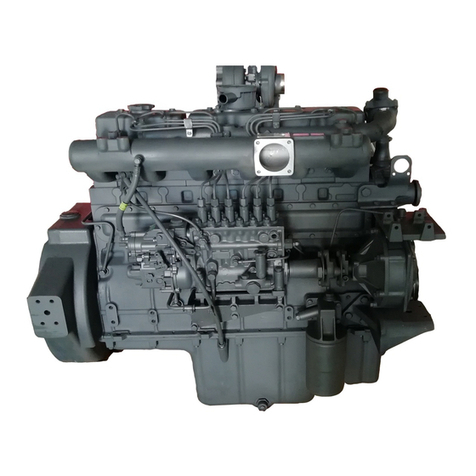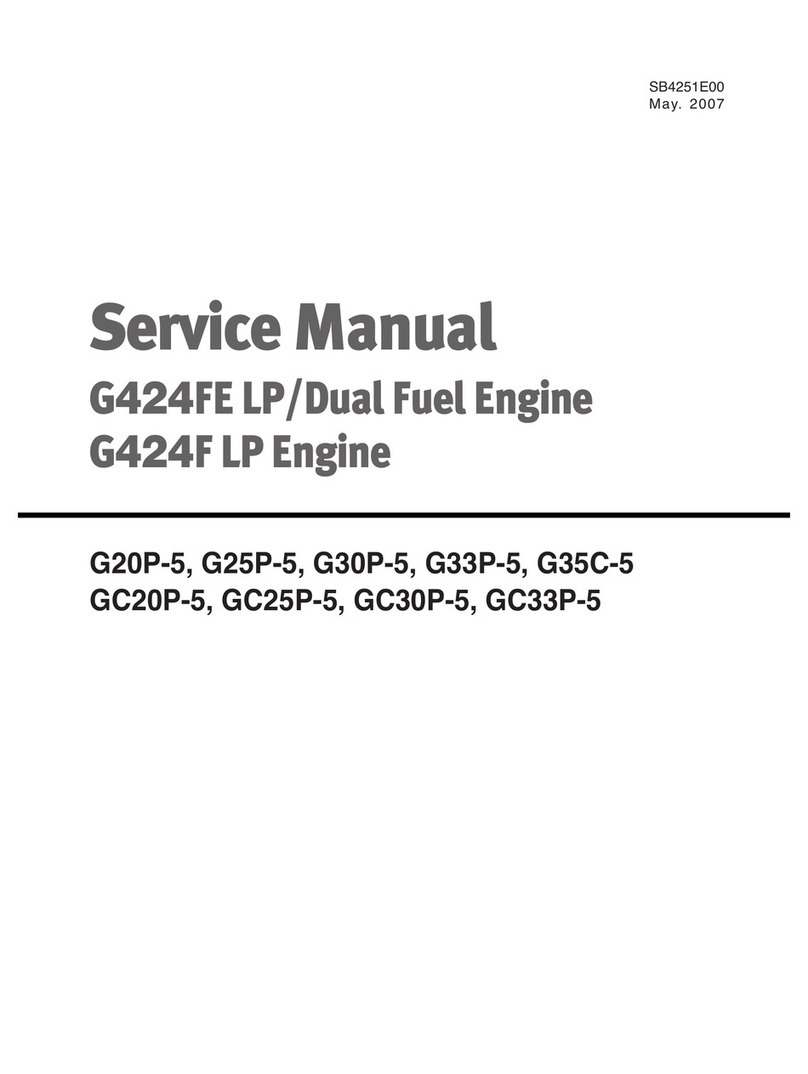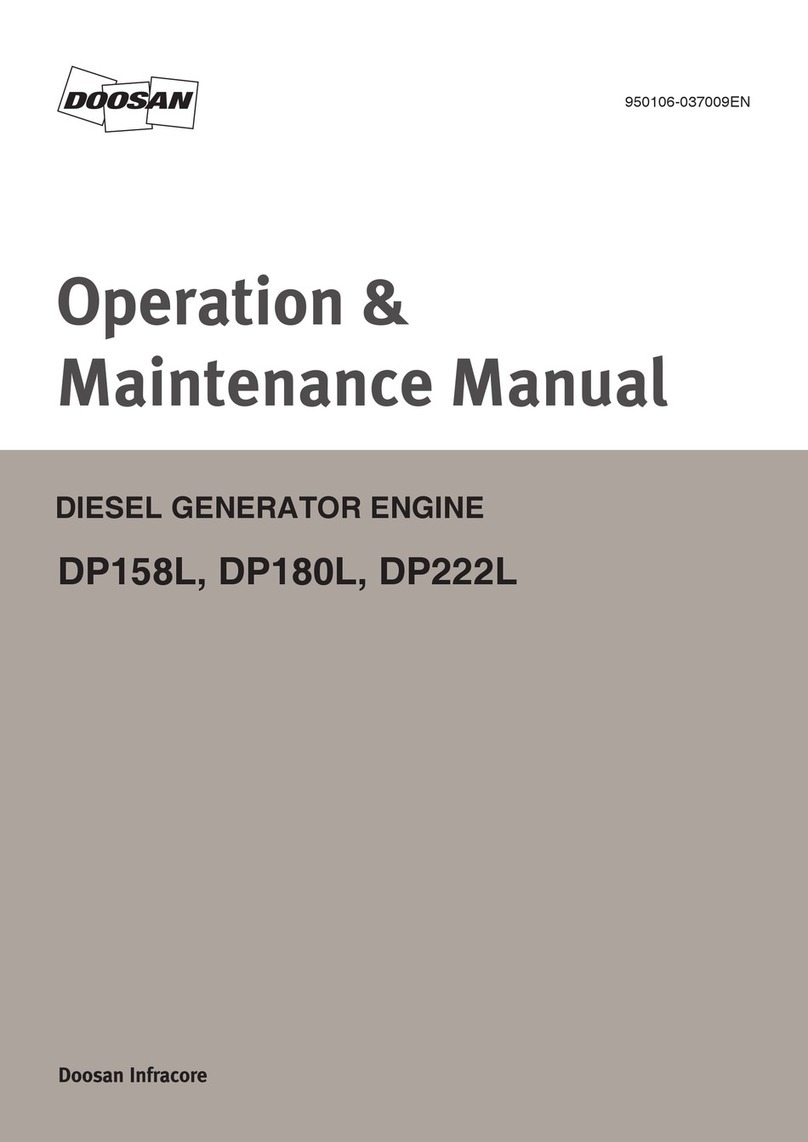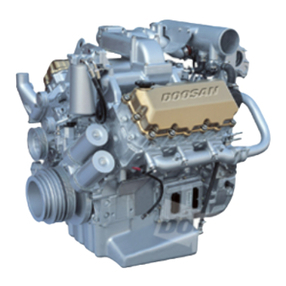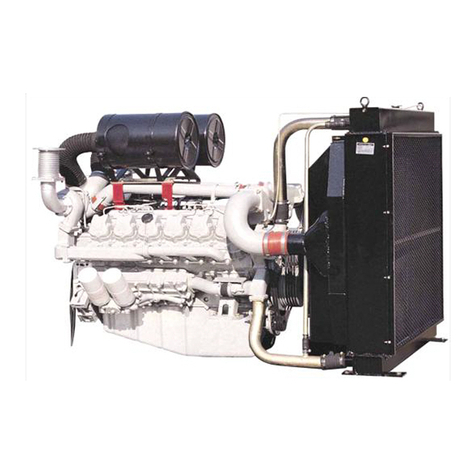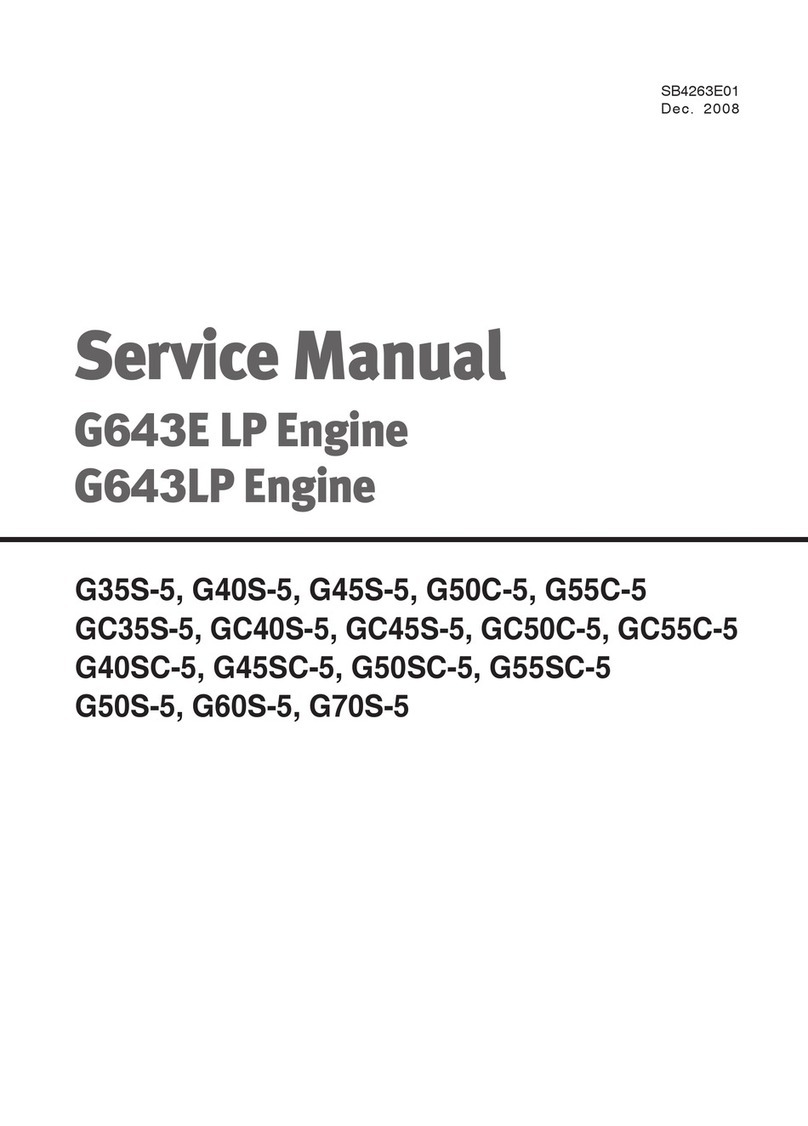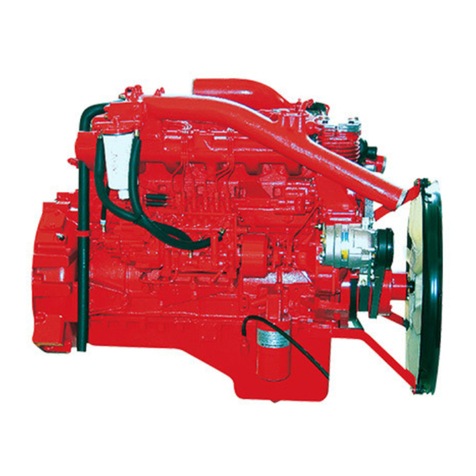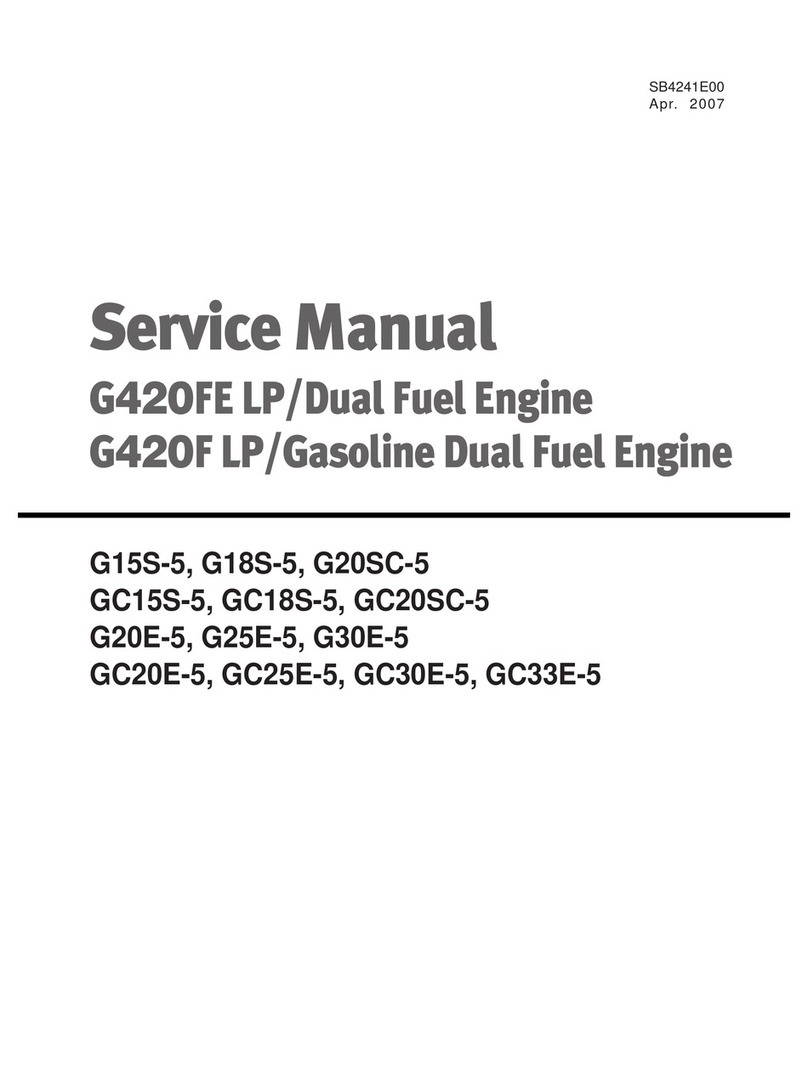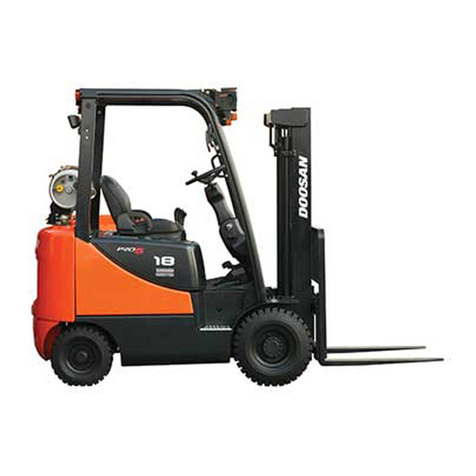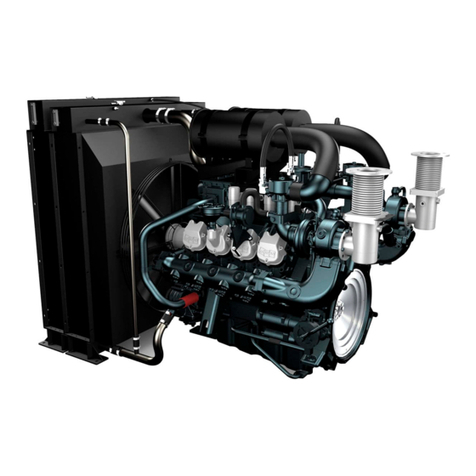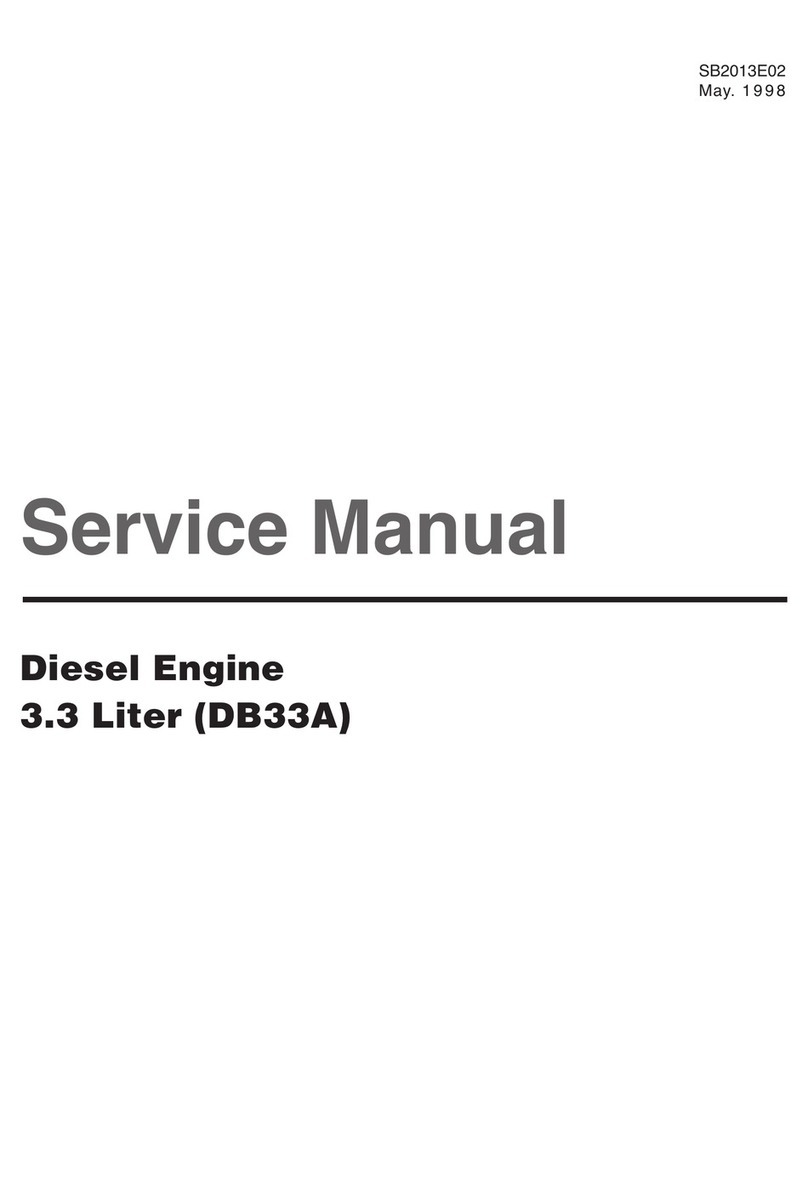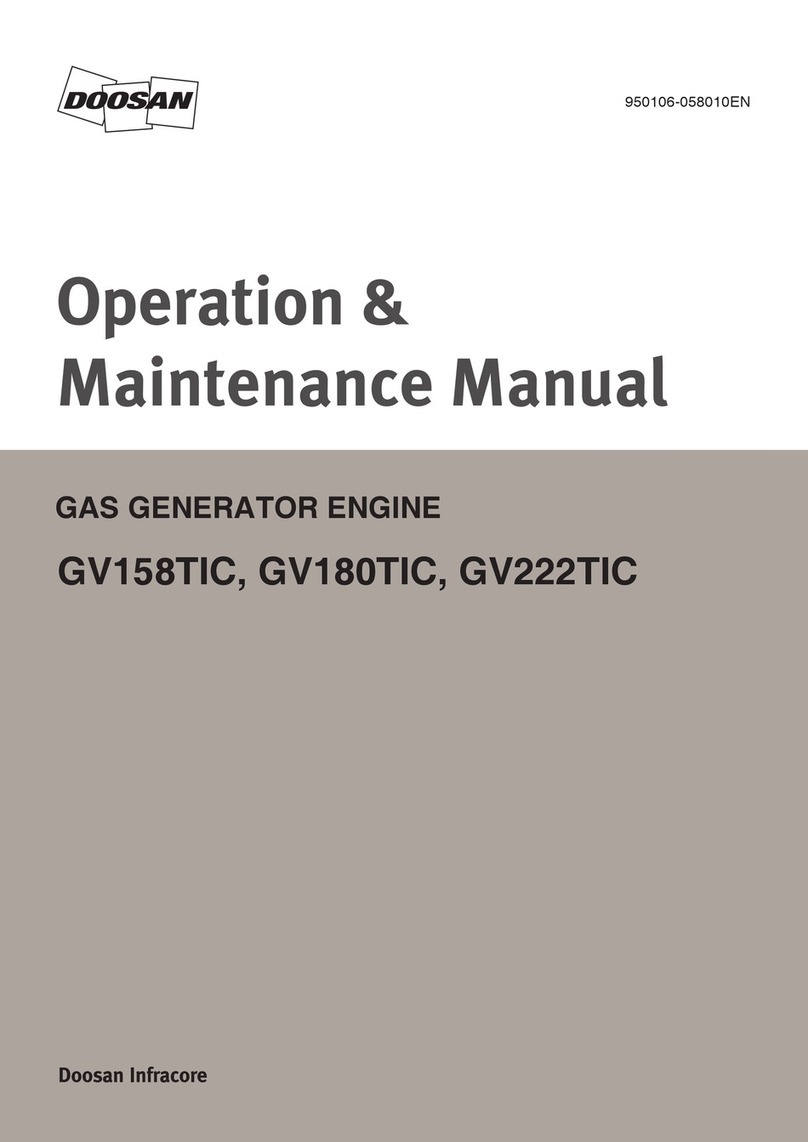DV11
Operation and Maintenance
3Safety regulations & specifications
Printed in Mar. 2005 PS-MMA0608-E1A
zWhen the engine is hanging on a crane, no-one must be allowed to stand or
pass under it. Keep lifting gear in good condition.
zWhen do electric weld, stop the engine, power off, then remove the wire
harness’ connector which is connected to the ECU.
zDo not weld the electric control unit (ECU) absolutely, and do not damage on
it by electrical or mechanical shock.
zWhen working on the electrical system disconnect the battery earth cable
first. Connect it up again last in prevent short circuits.
1.1.3. To prevent damage to engine and premature wear
(1) Never demand more of the engine than it was designed to yield for its intended
purpose.
Detailed information on this can be found in the sales literature. Engine control
unit must not be adjusted without prior written permission of DOOSAN.
(2) If faults occur, find the cause immediately and have it eliminated in order to
prevent more serious of damage.
(3) Use only genuine DOOSAN spare parts. DOOSAN will accept no responsibility
for damage resulting from the installation of other parts which are supposedly
"just as good”.
(4) In addition to the above, note the following points.
zNever let the engine run when dry, i.e. without lube oil or coolant.
zPay attention to cleanliness. The Diesel fuel must be free of water.
zUse only DOOSAN approved service products (engine oil, anti-freeze and
anticorrosion agent)
zRefer to the subjects of recommendation of the fuel.
zHave the engine maintained at the specified intervals.
zDo not switch off the engine immediately when it is warm, but let it run without
load for about 5 minutes so that temperature equalization can take place.
zNever put cold coolant into an overheated engine.
zDo not add so much engine oil that the oil level rises above the max. marking
on the dipstick. Do not exceed the maximum permissible tilt of the engine.
zAlways ensure that the testing and monitoring equipment (for battery charge,
oil pressure, coolant temperature) function satisfactorily.
